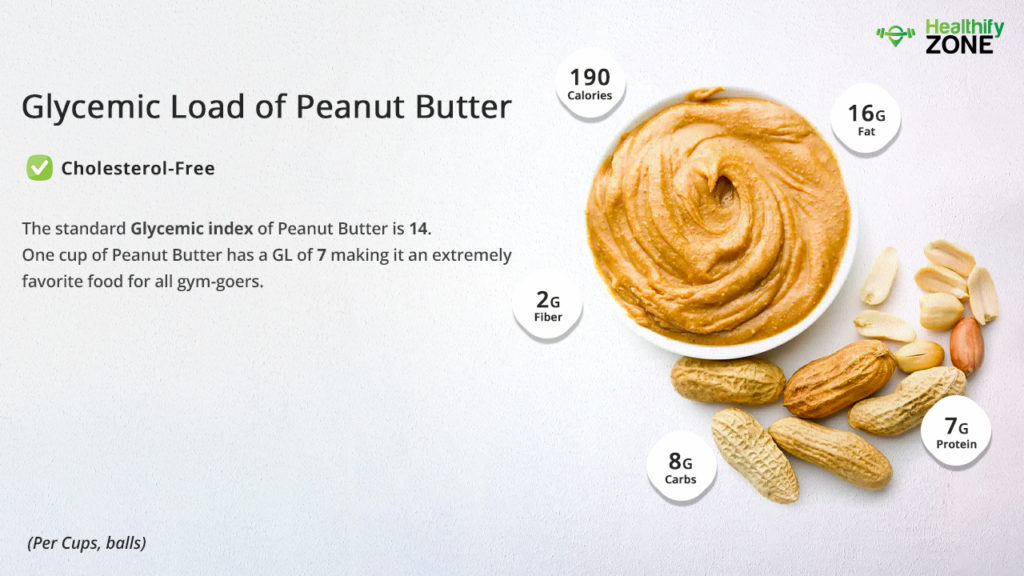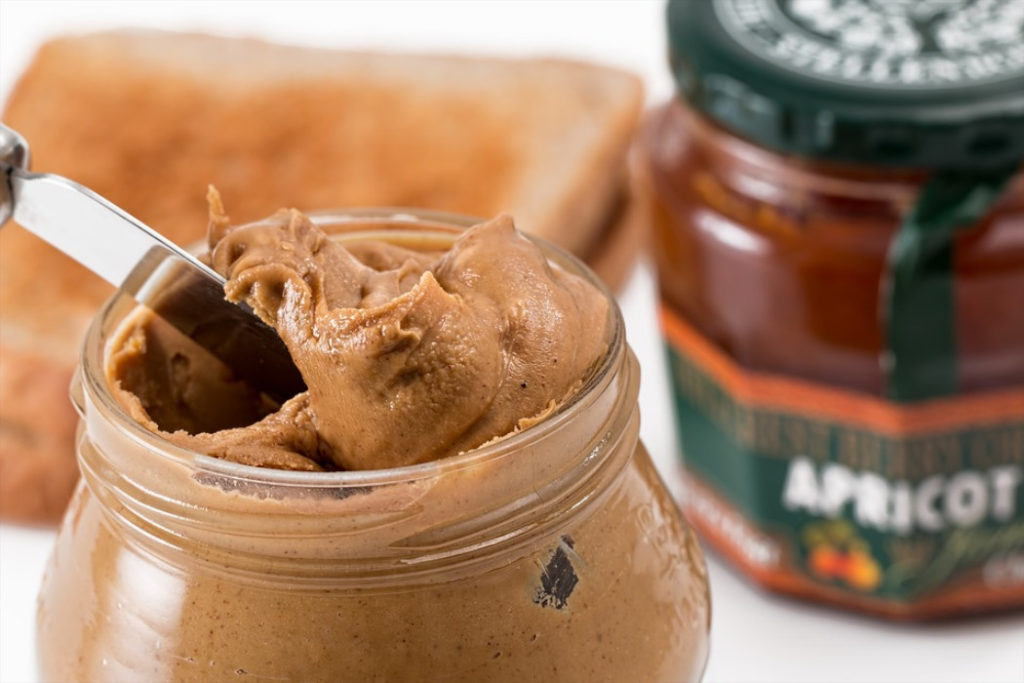Glycemic Load is the measurement of carb content present in food and the pace with which it increases the blood sugar levels. The Glycemic Index gives a number to each food item according to how it increases and impacts your blood glucose levels. This is an easier way of finding healthier alternatives. Glucose leads to a higher blood glucose response in comparison to fructose.
Known to be one of the most popular spreads around the world, peanut butter is known for being absolutely delicious and having an amazing texture. It is loaded with nutrients, and the International GI Tables have found that it has a GI of 14, which is low. It is said that not everyone can enjoy peanut butter because a lot of people are allergic to it.
Peanut Butter is an excellent alternative to regular butter, and it comprises healthy nutrients like
- Protein
- Oleic Acid
- Linoleic Acid
- Vitamin E
- Vitamin B3
- Vitamin B6
- Folate
- Magnesium
- Copper
- Manganese
- Vitamin B5
- Iron
- Potassium
- Zinc
- Selenium
How to Calculate Glycemic Load of Peanut Butter?
The standard Glycemic index of peanut butter is 14. If we want to talk about diet, the key to prevent diabetes or any chronic illness is to distribute the carbohydrate consumption content throughout the day and manage the sugar levels in the body correctly—peanut butter is high in protein. It is often consumed with shakes or as a bread spread.
The Formula/Procedure For Calculation of Glycemic Index of the Peanut Butter :
GL = GI * carbs / 100
where
- GL – glycemic load;
- GI – glycemic index;
- and carbs – the amount of carbohydrates in the portion.

| SL.NO | PEANUT BUTTER BY WEIGHT IN (g) | GLYCEMIC LOAD |
| 1. | 100 g of Peanut Butter | 2.8 (low) |
| 2. | 250 g of Peanut Butter | 7 (low) |
| 3. | 500 g of Peanut Butter | 14 (medium) |
| 4. | 1 Kg of Peanut Butter | 28 (high) |
| 5. | 1 Tablespoon of Peanut Butter | 0.42 (very low) |
| 6. | 1 Cup of Peanut Butter (150 g) | 7 (low) |
Is Peanut Butter Safe to Consume If You Have Diabetes?
Given that peanut and peanut butter has a low glycemic index, it is certain that they do not cause a sharp rise in blood sugar levels. For people who have diabetes, it is important to manage and maintain blood sugar levels carefully. Peanut butter is an excellent option because it tastes great and does not cause your blood sugar to rise suddenly. They are full in nutrition, and you can add them to your carb-controlled diet.
Can I Eat Peanut Butter During a Fat-Loss Diet?
You can eat peanut butter on a fat-loss diet. But, you have to be careful about the portion size you consume. We suggest you do not consume more than 100 g.

- A 100 g serving of peanut butter has a GL of 2.8 which is in the permissible levels.
- Peanut Butter has a high amount of fat, which are healthy but must be monitored.
Can I Eat Peanut Butter During a Low-Carbohydrate Diet?
You can consume peanut butter while on a low-carbohydrate diet. However, we suggest you not consume more than 250 g in one serving.
Is Peanut Butter High in Sugar?
100 g of peanut butter has 9 g of sugar and 20 g of carbs. Although low in sugar, it has a considerable amount of carbs that eventually breaks down into sugar. It is an excellent alternative for regular butter, which essentially does not have good nutritional value. Nut butter is healthier and more preferable.